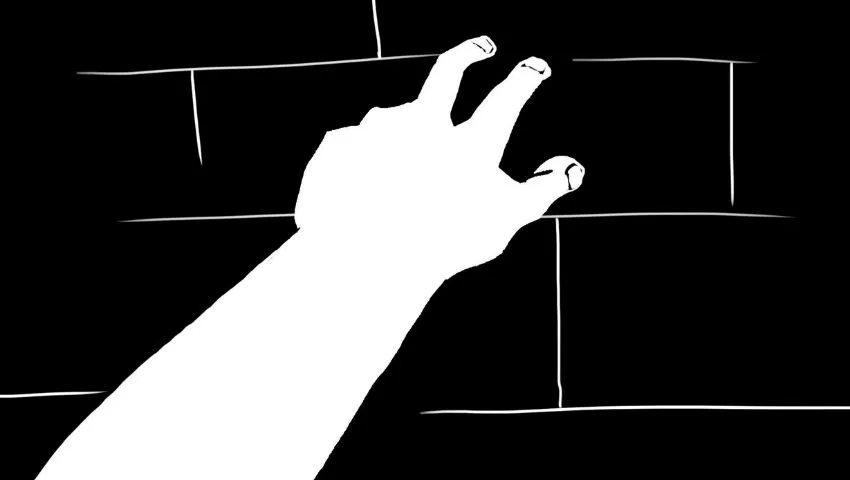Positives cannot exist with the negative to contrast them. Positive and negative space work together to balance all artistic compositions.
Without a good balance of the two, the piece will either be too overwhelming or too dull to function.
In the article, we’ll learn all about the importance of negative space, including how to use it with positive space to create compositional balance and rhythm in the work.

What is Negative Space?

Negative space is the area not covered by the subject in a piece of art.
It is fundamental to defining the form of the subject but can also be used for its own purposes.
All visual art has both positive and negative space in the same way all music has pauses between the notes.
A cloudscape is a simple example of this.
The clouds are the positive space and the sky behind them is the negative space.
The clouds ‘come forward’ as the subject while the sky recedes into the background.
Both positive and negative space form shapes in the composition and affects the work’s compositional balance.
Rubin’s vase is a famous example of an excellent negative space design.
It uses hidden images in the background image flip the use of positive and negative space in our minds.
On either side of the vase, you can see the profile of a face in the negative space.
Thus, the image can look either like a vase with a background or two people conversing.
Sometimes, it is not apparent what the main focus of a piece is.
Also, you might not know which is the positive space and which is the negative.
This can be done intentionally, like in the case of Rubin’s vase, or unintentionally.
The composition is balanced, such as both the positive and negative space feel equally heavy.
In the end, positive and negative space is inherently subjective.
Some people may see one area as positive, others as negative, and vice versa.
What are the Fundamentals of Negative Space?
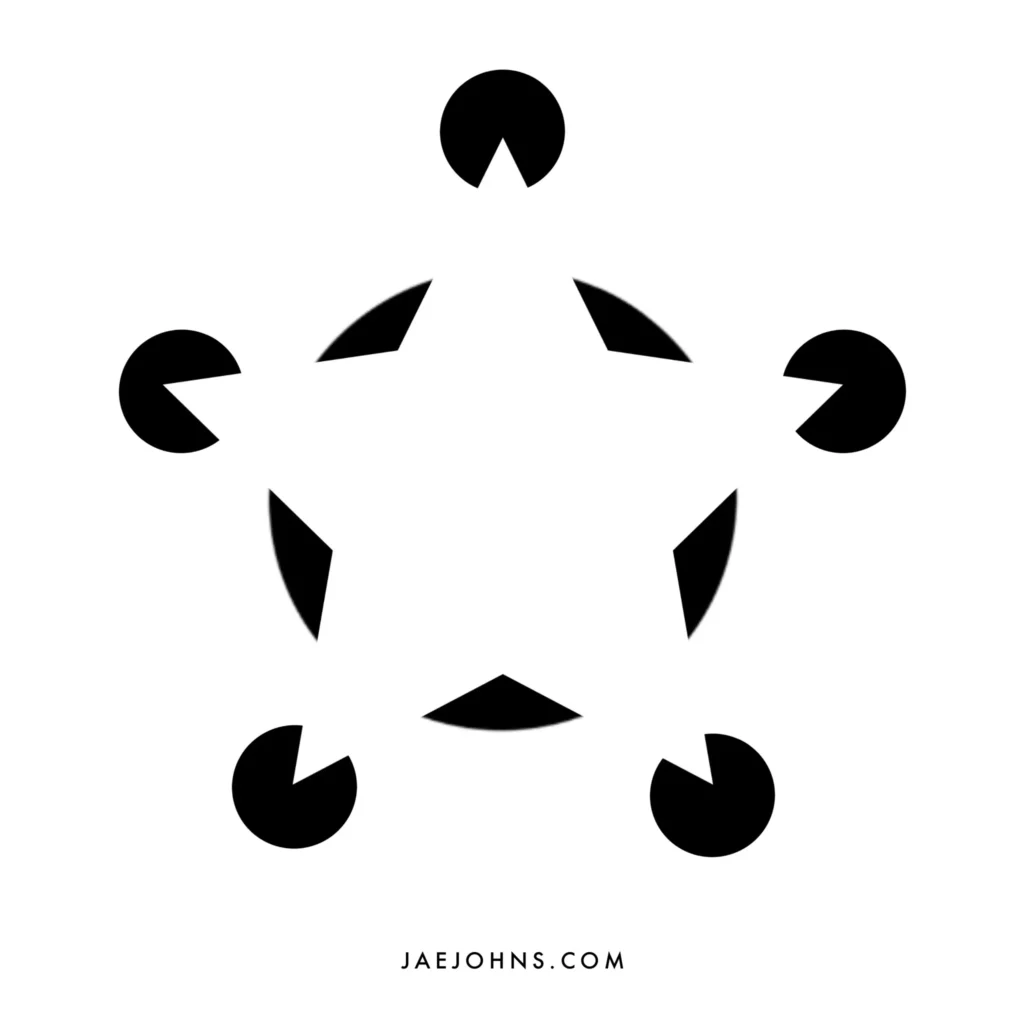
Negative space is what defines the compositional balance of a work of art.
Therefore, when artists talk about the different compositions and their fundamental shapes, these shapes come from where the subject is laid out on the page compared with the negative space.
Framing the subject is critical to giving it an artistic and striking composition.
You can’t underestimate what negative space will add to the image.
You can also use negative space to evoke a sense of loss or absence.
For example, when an aspect of the piece should be a subject in the art, but it’s not there.
This can also make an image appear more mysterious or give the impression of longing.
Why is Negative Space Important?

- Negative space helps to understand the proportion and relationships between key objects.
- The limits of objects are defined by negative space, creating our mental image of different everyday objects.
- The use of negative space helps to create balanced and unified compositions.
- Together, positive and negative space creates the figure/ground relationship.
- Generally, the positive shape is darker than the negative shape because the sky is lighter than most objects. However, sometimes this can change depending on the scene.
- Negative space helps identify a focal point for the eye in the composition.
- Negative space is often quieter and more neutral than positive, allowing our attention to be funneled towards the main subject.
- Without enough negative space, the composition can look cluttered, with no rest for the eye.
- Finally, the visual balance of positive and negative space is one of the principles of good design. The duality of both creates balance and harmony in the piece.
How can Negative Space Help with Drawing?

Beyond being a powerful compositional device, negative space helps define the subject’s form.
It can be easier to make a shape stand out.
This works if you consider how it will stand in proportion to the negative space around it.
A person can use negative space in the layout of their drawing to accentuate the positive shapes in the work and make them stand out.
If you’d like, you can try the following exercise to help your observational skills and sketching with negative space.
Choose a scene with some subjects and focus on the negative space.
Scan the scene from the bottom up or the top down, and look for the simple shapes within the subjects’ negative space.
The focus should be on size, proportion, and relation of figures – detail doesn’t matter since this is the negative space.
This exercise should help most people by allowing them to block out the fundamental position of the piece.
You can do this by looking at the triangles, rectangles, and other simple shapes in the hollows between objects.
The final result should be a highly abstract drawing used as a map for the full drawing or painting.
Read Also: Every Type of Space in Art Illustrators and Painters Should Know
Positive and Negative Space in Composition
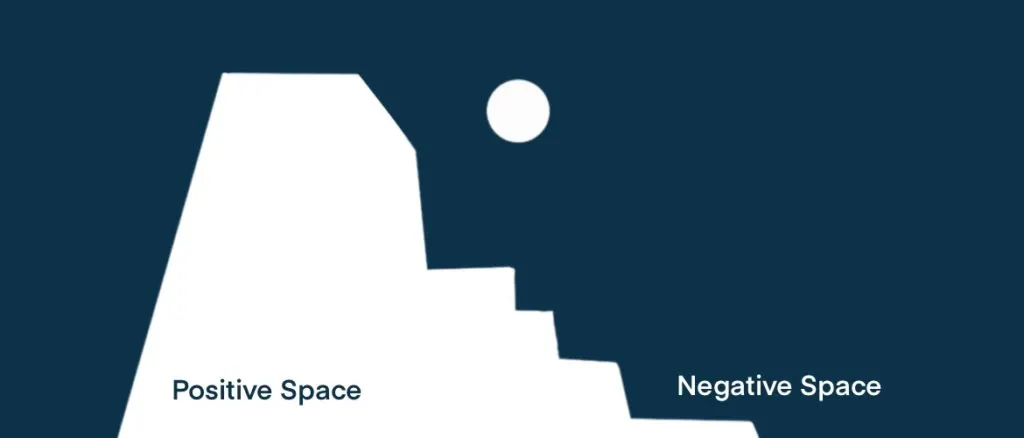
There are two major uses of positive and negative space that can have a huge impact on composition: balance and rhythm.
Balance
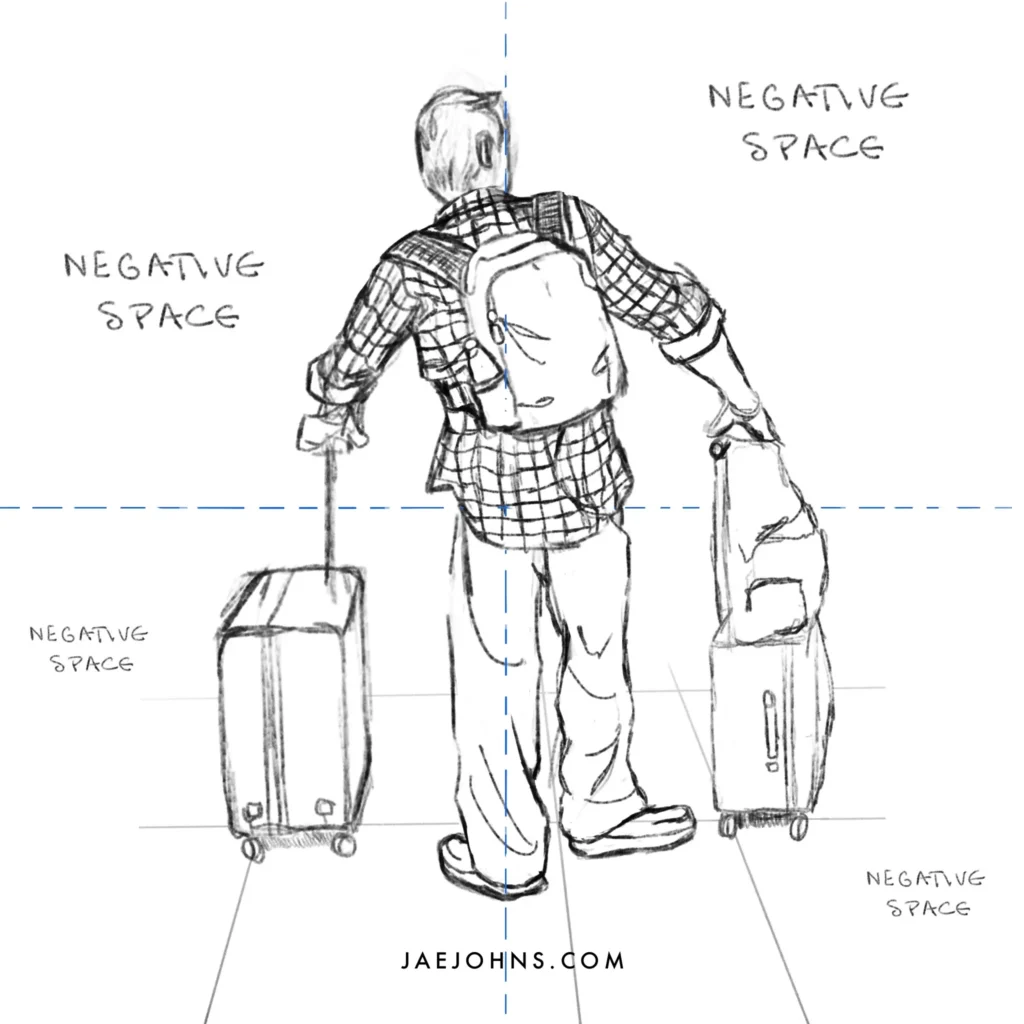
Balance is a fundamental principle of composition and refers to the overall amount of positive vs. negative space in the piece.
It also matters where the amount of each is across the entire design.
There are no hard and fast rules to a healthy balance of positive against negative space.
Sometimes, the subject taking up one-half of the image can be balanced out by an equal amount of negative space on the opposite side.
At other times, a back and forth pattern of positive and negative space balances the image.
In the end, it’s often a matter of careful observation and a feel for the balance of the piece.
While there aren’t hard rules, you can judge the balance and rebalance according to where it feels off.
One tip is that a bustling, concentrated area of positive space can usually be balanced by around twice to three times as much quiet negative space around it or to one side.
Generally speaking, the subject tends to be busier and the negative space more muted and simple.
Compositional balance is working with other aspects of the painting, such as color, shape, and movement of the eye.
That is why there can be no hard rules because other factors can change the balance.
Rhythm
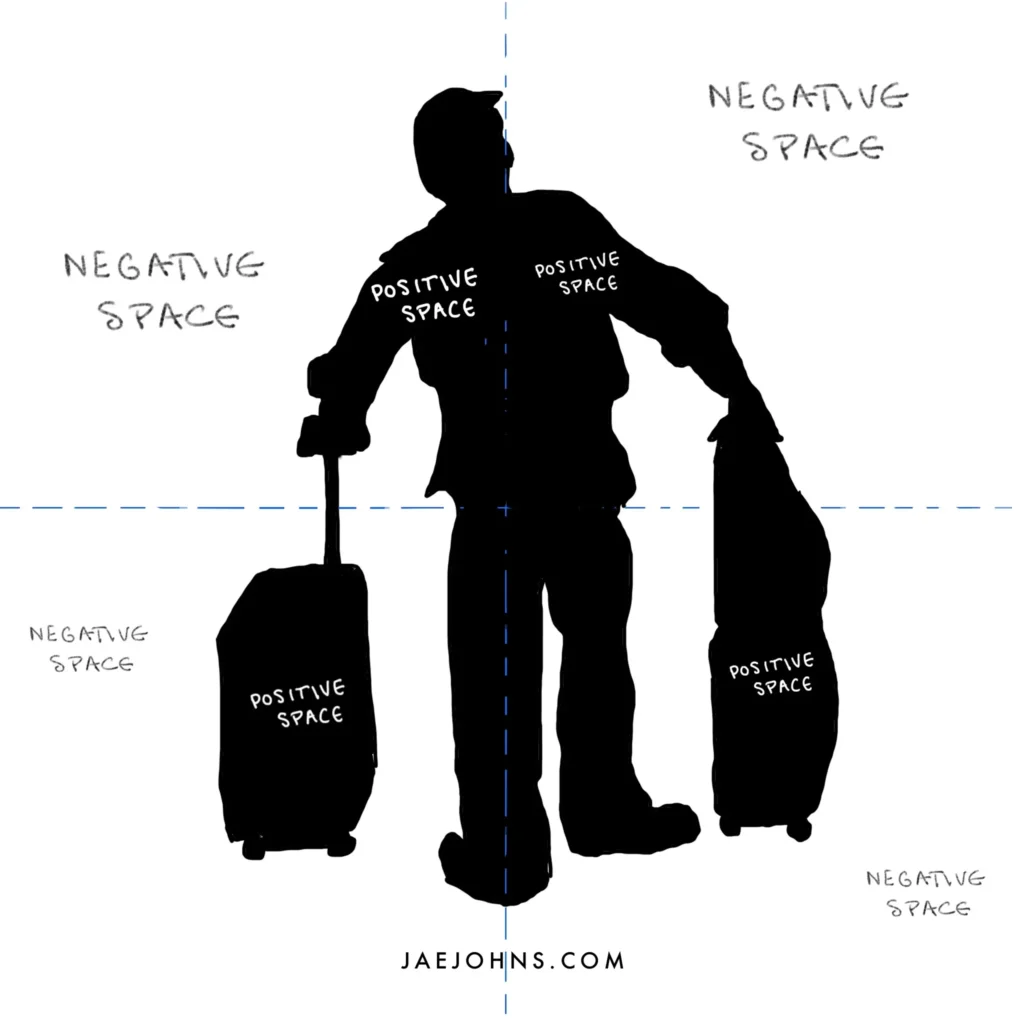
Where balance refers to the overall amount of positive and negative space, rhythm refers to the patterns of repetition and alternation within the work.
Using alternating patterns of positive and negative in a work creates a sense of rhythm to the piece.
Sometimes the rhythm is achieved through the positive and negative space created in the direction one’s eyes go throughout the work.
It is highly subjective and hard to define but unmistakable when present.
Consider the use of repetition in the piece and how one feels as you look at the painting and feel out the ‘pace’ presented by the positive and negative aspects as your eye moves across the piece.
Negative Space in Graphic Design
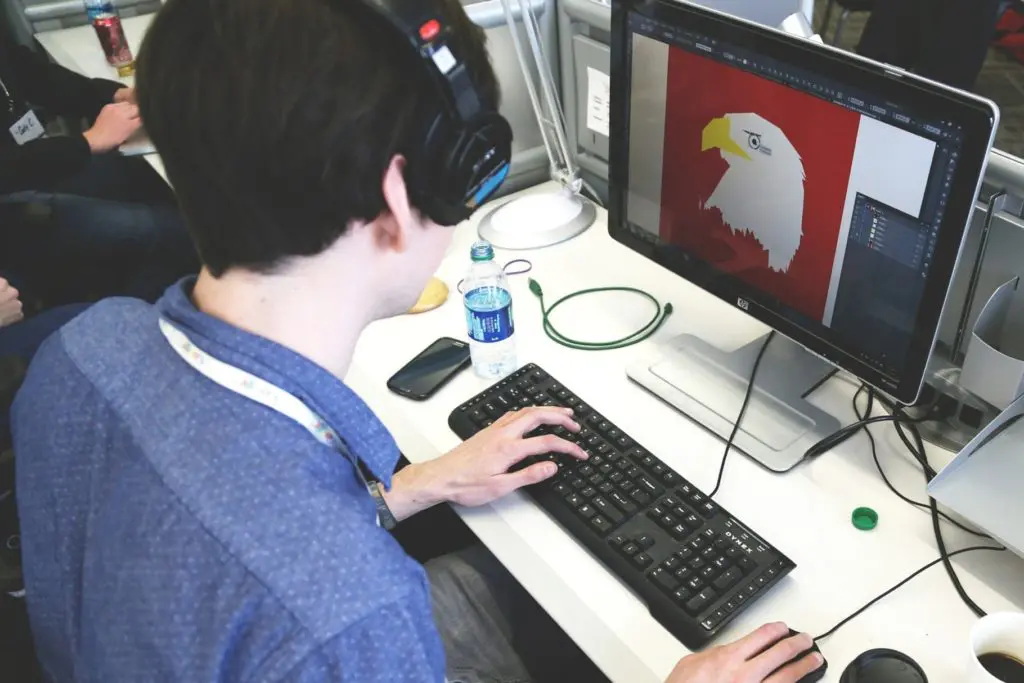
Negative space is a crucial element of design.
A professional designer will use different design elements and design techniques that incorporate negative space because it is one of the basic principles of design.
In addition, it is a tool for designers that helps to create bold, graphic shapes using simple shapes.
Since the design process often only uses one or two colors, using the negative space is crucial to create that graphic quality for the design solution for a client.
The use of digital design makes creating a crisp, perfect use of negative space more possible today than ever before, making the graphic design workflow more manageable than ever.
Combining Positive and Negative Space

You can link together positive and negative space areas in a drawing or painting by matching the value, hue, or another element between two areas.
The primary value of such interlinking is to make the subject and the background feel like one in the same piece.
Sometimes artists go for the opposite approach, contrasting their subject with the background to bring them forward as much as possible.
However, it is just as valid to search for ways to connect the subject with the background to have them flow together in the same work.
The Use of Negative Space throughout History
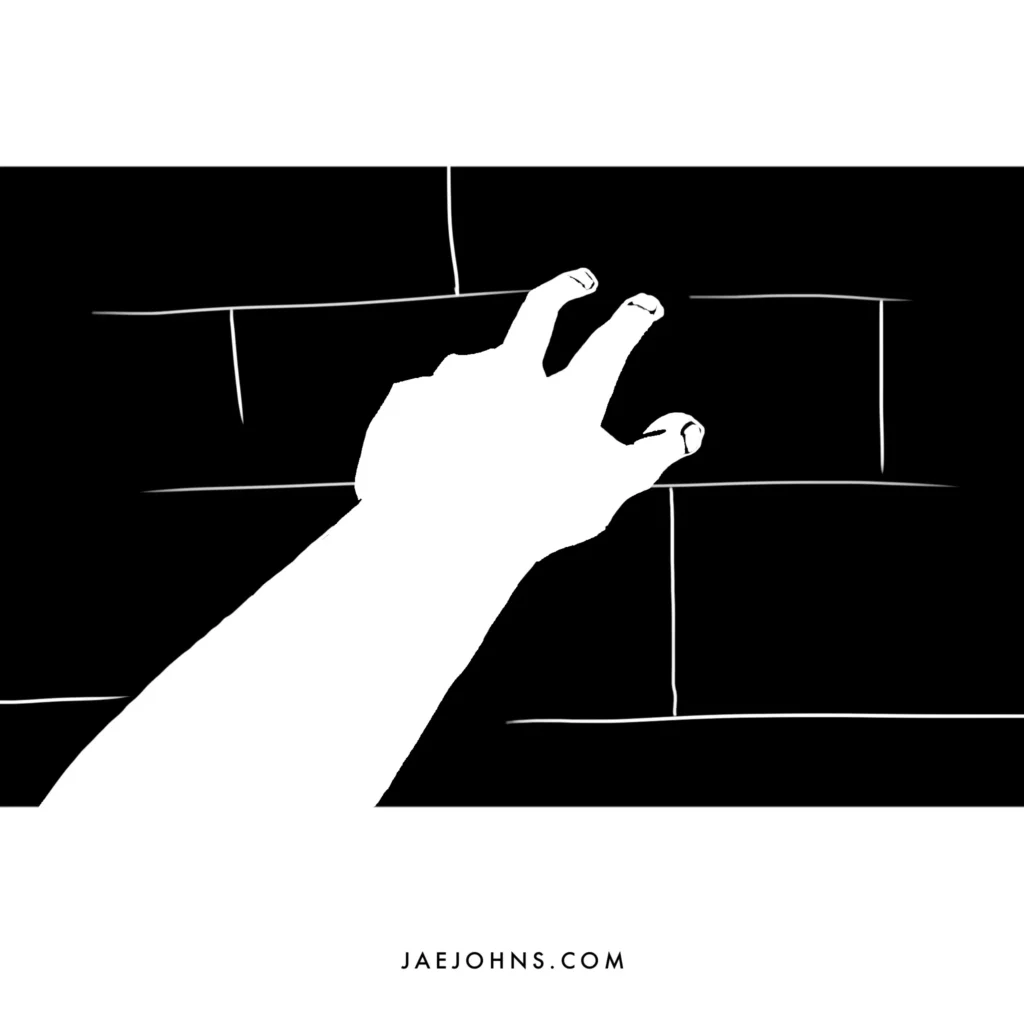
The concept of stenciling is one of the first major negative space examples, as was done in the oldest cave paintings found in Argentina and France.
Their hands were placed on the wall and pigment was applied over the hand so that when lifted, the handprint appeared in the negative space left by the hand.
Most likely, these people had known shadow puppetry, another use of negative space on the cave wall to create an image.
This fateful beginning has had a considerable impact on the rest of art history.
Negative Space Examples in History
Escher Paintings are fantastic examples of the use of negative space.
By balancing positive and negative space, M. C. Escher would play with our perspective to show how one could be flipped into another.
This technique is now standard practice for a graphic designer or logo designer, where they often use the negative space of the logo as an integral part of the image.
In photography, a photo is first the negative of the image one wants before becoming the positive image.
In modern art, the ghost of images has played an essential role in defining the power of negative space.
Taken to its extreme, one of the most brilliant examples is the 1915 painting entitled Black Square by Malevich, which simply shows a black square within a white border.
Although it becomes the subject and thereby the ‘positive space’ of the painting through the border, its absolute nothingness, void of any representation, form, or composition, creates the impression that it must be seen as pure negative space.
Today, using negative space in design is one of the most common ways to draw an image for attention.
In addition, the visual impact it creates allows for a more powerful layout arrangement of the layout elements.
Throughout history, the uses of negative space have been endless, from outlining the human figure and inanimate objects to the abstract power of a black square, and we’ve only touched the surface of its uses.
All art plays with positive and negative space in some way.
It is up to the artist to choose how to bring the balance to life.
Conclusion
The proper use of negative space is essential to all great compositions.
However, there is no right formula to using it.
The balance and rhythm depend on the good use of negative space, but the space itself is subjective and requires an excellent observational feel for its weight compared with the positive space.
Practice thinking about and using negative space in your pieces in various ways to build a sense of it.
As you do, you’ll find your compositions will improve, and the overall effect of your works becomes better


